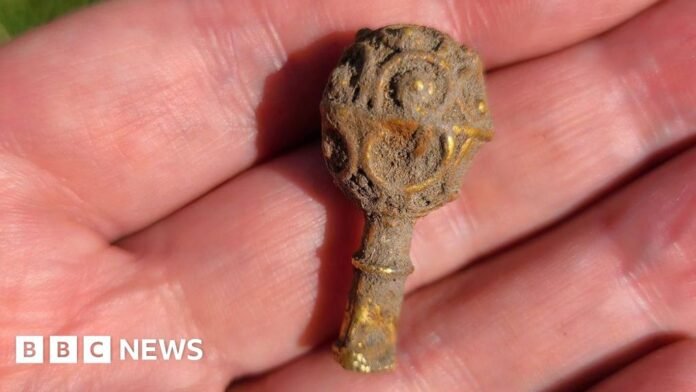An international student discovered a piece of 9th century gold just 90 minutes into her first archaeological excavation.
The early medieval object was found by Newcastle University student Yara Souza at a recent excavation in Redesdale, Northumberland.
It was buried close to the route of Dere Street, a major Roman road which ran between York and Edinburgh and which eventually became part of the modern-day A68.
Ms Souza, from Florida in the US, said: “It was amazing to discover something that hadn’t been seen for more than a thousand years, I was really geeking out over it.”
The excavation took place in July following the chance discovery of a similar object by metal detectorist Alan Gray at the same location in 2021.
Ms Souza was working alongside her fellow Archaeology students and archaeologists from North East Museums to further investigate the site.
The find is approximately four centimetres (1.5 inches) long and has a decorative finial at one end.
Gold was high status and only used by the elite and, as Dere Street connected two major religious centres at Jedburgh and Hexham, experts involved in the excavation think both objects could have had a religious or ceremonial use.
Prof James Gerrard said: “This is an exciting find of exceptional quality.
“We know that Dere Street continued to be a major thoroughfare long after the Romans and it’s clear from this discovery that high status people were using it.
“It is possible that this pair of objects may have been deliberately buried.”
The find will be further analysed and could eventually be displayed in the Great North Museum: Hancock.
Andrew Agate, the Portable Antiquities Scheme’s finds liaison officer for North East England, said the project is “a great example of how metal detectorists and archaeologists can come together to add to our understanding of the past in Northumberland”.




